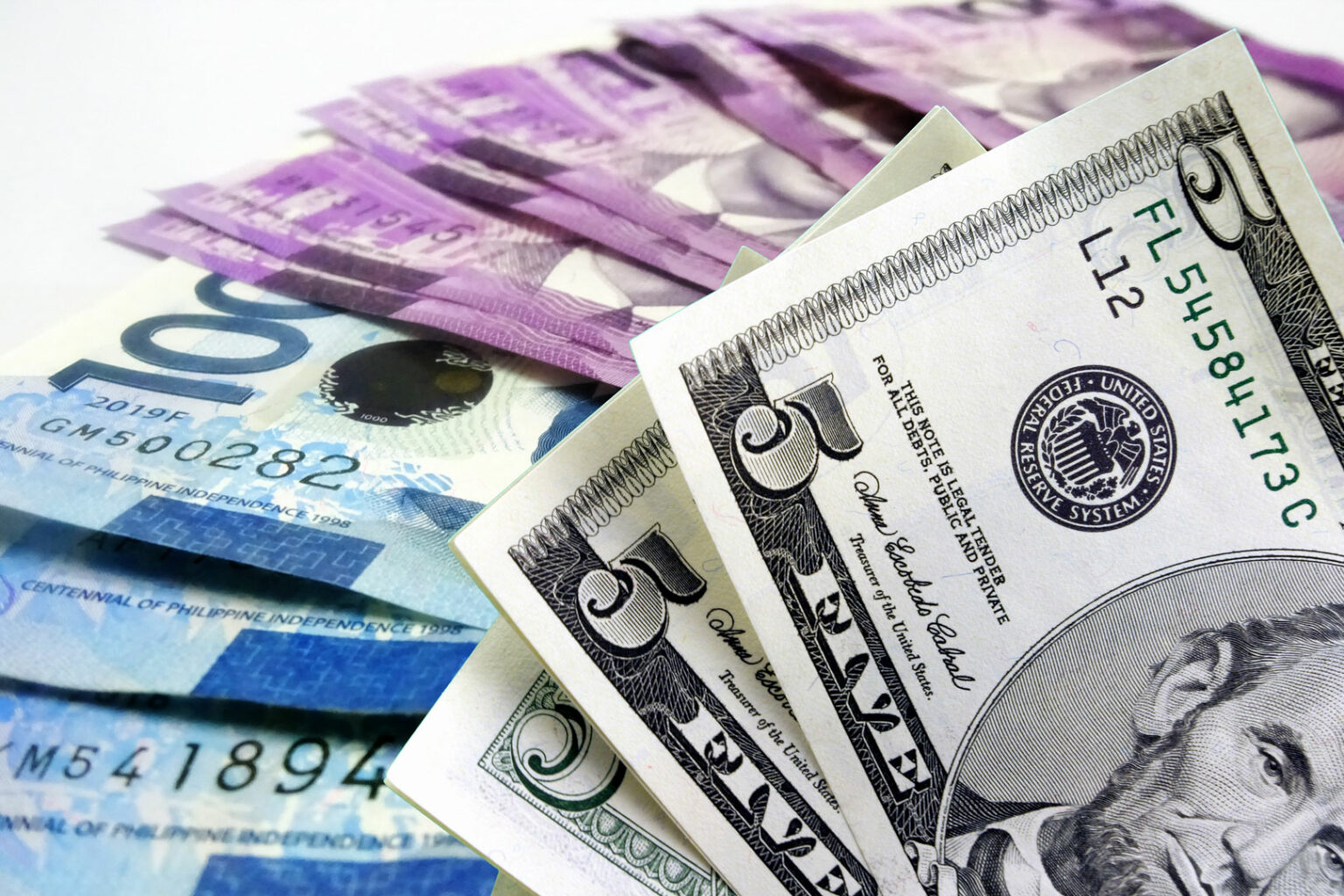




Policy Rate Updates: Double cut finale
 DOWNLOAD
DOWNLOAD

Monthly Economic Update: One for the road
 DOWNLOAD
DOWNLOAD

Inflation Update: Still low, still slow
 DOWNLOAD
DOWNLOAD


NG debt rises in April on weak peso

The National Government’s (NG) outstanding debt returned to the P15-trillion level as of end-April due to the weaker peso, the Bureau of the Treasury (BTr) said.
Data from the BTr on Thursday showed outstanding debt rose by 0.61% to PHP 15.02 trillion as of end-April from PHP 14.93 trillion as of end-March.
“Total debt increased by PHP 91.5 billion or 0.61% from the end-March 2024 level due to government net financing and the impact of local currency depreciation on the valuation of foreign currency-denominated debt,” the BTr said.
 Year on year, the outstanding debt stock jumped by 7.95% from PHP 13.91 trillion in the same period a year ago.
Year on year, the outstanding debt stock jumped by 7.95% from PHP 13.91 trillion in the same period a year ago.
Of the total debt, more than two-thirds or 68.64% came from domestic sources.
As of end-April, outstanding domestic debt edged higher by 0.3% to P10.31 trillion from PHP 10.28 trillion as of end-March. It also increased by 8.99% from PHP 9.46 trillion in the same period a year earlier.
Government securities made up almost the entire domestic debt as of end April.
“For the month, the increment resulted from the PHP 27.23-billion net issuance of government securities and the PHP 3.78-billion effect of peso depreciation on foreign currency-denominated domestic debt,” it said.
Data from the BTr showed the peso closed at PHP 57.583 against the dollar at end-April, weakening by PHP 1.323 from its PHP 56.26 finish a month ago.
Meanwhile, external debt went up by 1.3% to PHP 4.71 trillion as of end-April from PHP 4.65 trillion as of end-March. Year on year, foreign debt rose by 5.74% from PHP 4.45 trillion.
“Although there was a net repayment of PHP 32.91 billion in foreign loans within the month, the considerable depreciation of the peso caused a PHP 109.31-billion upward adjustment in the local valuation of US dollar-denominated debt, partly offset by the PHP 15.91-billion downward adjustment brought about by the opposite movement of third-currency debt,” the BTr added.
External debt was composed of PHP 2.25 trillion in loans and PHp 2.46 trillion in global bonds.
Broken down, global bonds consisted of PHP 2.07 trillion in US dollar bonds, PHP 212.85 billion in euro bonds, PHP 64.03 billion in Japanese yen bonds, PHP 57.58 billion in Islamic certificates and PHP 54.77 billion in peso global bonds.
Meanwhile, the NG’s guaranteed obligations stood at PHP 356.06 billion as of April, up by 2.89% from PHP 346.04 billion in March. However, it dropped by 6.47% from PHP 380.69 billion in the same period in 2023.
“The increment was due to the net availment of domestic guarantees amounting to PHP 7.54 billion and the impact of peso depreciation on foreign currency-denominated guarantees amounting to PHP 3.8 billion,” the BTr said.
“On the other hand, third-currency adjustments against the US dollar trimmed PHP 1.32 billion,” it added.
Analysts noted that the peso depreciation contributed to the increase in debt as of end-April.
“This 0.61% increase from March is due to a combination of government borrowing and a weaker peso. Domestic debt grew slightly, impacted by new government security issuances and peso depreciation,” Security Bank Corp. Chief Economist Robert Dan J. Roces said in a Viber message.
Mr. Roces said the higher external debt was “primarily due to the peso’s depreciation inflating the value of dollar-denominated debt, outweighing a small decrease from other currencies.”
In mid-April, the peso sank to the P57-per-dollar level for the first time since November 2022, which was also its worst close in 17 months at the time.
“Weaker peso exchange rate over the past two years could have also increased the peso equivalent of foreign debt,” Rizal Commercial Banking Corp. Chief Economist Michael L. Ricafort said in a Viber message.
Mr. Ricafort said that outstanding debt could rise further after the government’s dollar bond issuance in May and other planned borrowings for the rest of the year.
The Philippine government raised $2 billion from its dual-tranche dollar bond issuance in May, its first global bond sale for the year.
The government’s borrowing program is set at P2.57 trillion this year, of which 75% will come from domestic sources and the rest from foreign sources.
As of the first quarter, the NG’s debt as a share of the gross domestic product (GDP) stood at 60.2%. This was below 61.1% a year ago but higher than 60.1% at the end of 2023.
The government’s debt-to-GDP ratio target this year is set at 60.3%. It seeks to bring this down further to 55.9% by 2028. — By Luisa Maria Jacinta C. Jocson, Reporter
This article originally appeared on bworldonline.com





 By BusinessWorld
By BusinessWorld